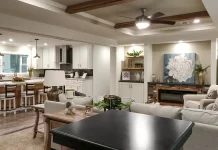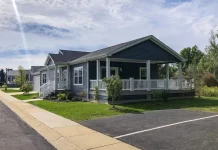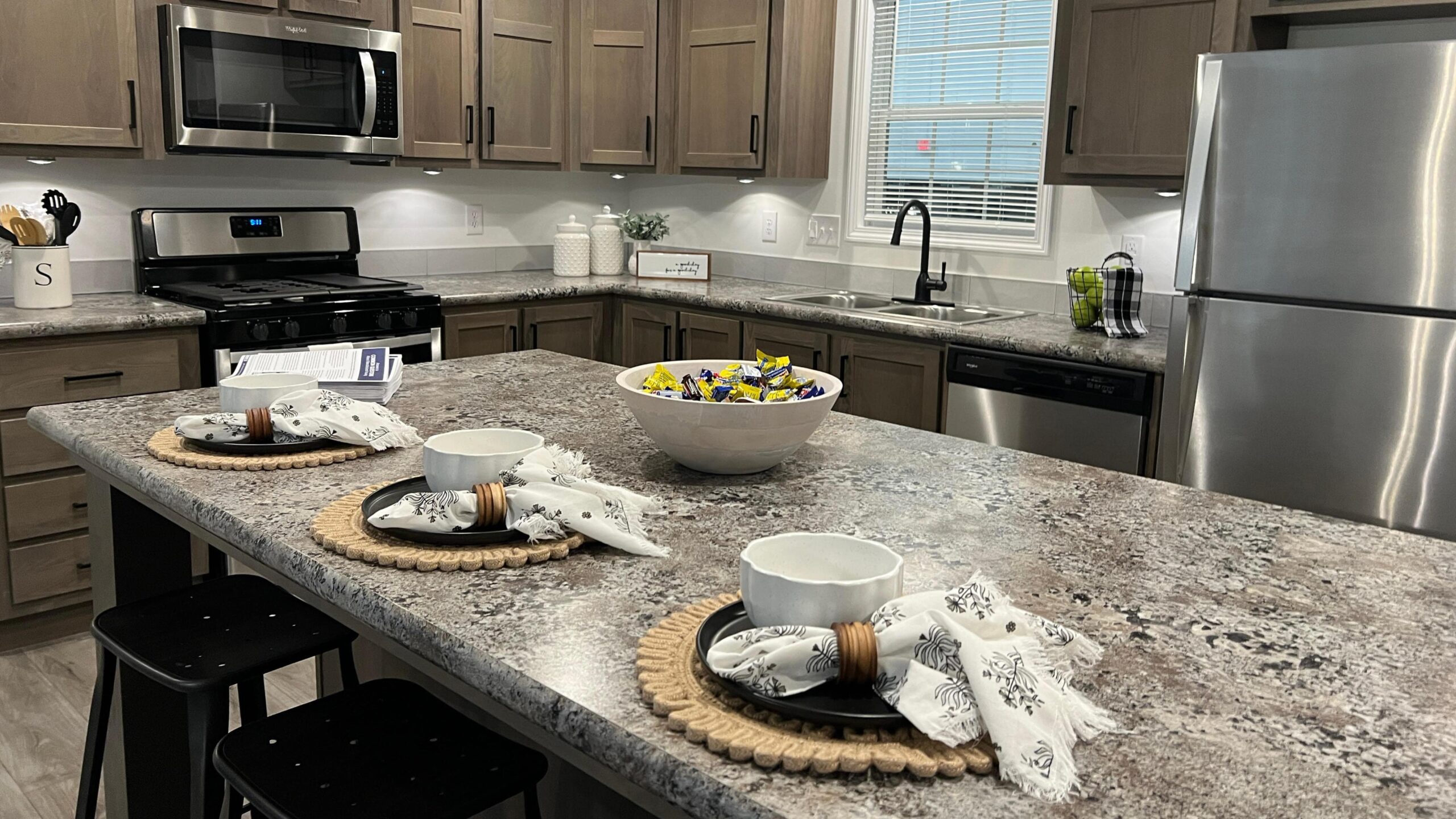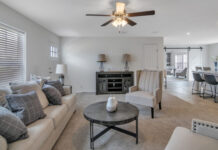As housing prices continue to rise, people are increasingly looking for alternatives to building traditional single-family homes. While site-built homes are desirable with customizable features, the price can be prohibitive for the buyer – especially in today’s market. Purchasing a manufactured home, however, is a great opportunity to break the renting cycle and build some equity.
When you think of a manufactured home, you might think of the single or double-wide trailers set really close together in mobile home parks. These communities have historically been stigmatized, but their value and convenience makes them a desirable housing option for millions of Americans.
The majority of manufactured homes are built for private land, though a quarter of manufactured homes today are purchased and parked in rented spaces in manufactured home communities. The ease of which these homes can be placed on a piece of vacant land is a distinct advantage. Some buyers purchase a home as their primary residence or choose one as a vacation home. Either way, manufactured homes can offer all of the amenities of site-built homes at a lower cost.
Manufactured homes come in a wide variety of styles from multiple manufacturers in the business. Whether you are looking for a small, modest space or a luxurious abode, there is a manufactured home that will meet your needs.

Levels of Manufactured Homes
Before we compare the costs of a manufactured home against a site-built home, it’s important to understand that manufactured homes come in three basic levels. The difference between the three is not due to quality or building standards, but has everything to do with options and upgrades. These three levels vary widely in price, construction materials and techniques, the type of windows, doors, and roofing materials.
Lower level homes reduce costs by using glue and staples instead of nails, lowering the pitch on the roof, using fewer trim materials, and installing cabinets and fixtures with plain features. The doors and windows may be slightly smaller as well.
Mid-level homes use higher-quality materials. This may include studs, nails, trim, and an upgraded roof with shingles rated for harsher weather. They may also add higher-end cabinets and fixtures, energy-efficient windows, and sometimes even a garage.
Just like site-built homes, high-end manufactured homes can be top of the line. They use the best materials in terms of lumber, tiles, and floor coverings. The roofs are more pitched to encourage water run-off, with eaves built-in. They can even come with porches and decks. Every amenity, such as carpeting, cabinetry, appliances, and trim have upgradable options.
Luxury models have all of the options of an on-site built home, but with efficiencies in building. If you upgrade amenities to your home when building, your home can appear very similar to a site-built home. In addition to upgrading doors and roofs, laying a basement foundation and landscaping the yard can make the home nearly indistinguishable from a site-built home from the curb.
Manufactured Home Efficiencies
As you consider a home build, there are several advantages a manufactured home might have over a site-built home, both in terms of costs and efficiencies. In fact, the efficiencies often drive down the costs. Part of the process for the two types of homes is similar. If you are building on a plot of purchased land, both homes require clearing and leveling of the building space, putting in some sort of foundation, and hooking up to sewer and water. After that, the building process goes off in different directions.
Here are several ways in which manufactured homes adds efficiencies to the process:
Building Crews and Labor Costs
On-site homes require a crew to come to the site for the length of the project.
According to Richard Fung, owner of Forever Homes, “there must be a coordination among framers, plumbers, electricians, roofers, and others. The materials must be delivered on time and protected from the elements until they are ready for use. A lot of factors go into scheduling labor.”
Manufactured homes are built off-site in a warehouse by an assembly line crew with consistent processes. While a building company might have a selection of just a few floor plans to choose from, this allows them to perfect every aspect of the process. Even if they have several floor plans, these homes have a lot in common with each other, which allows the builder to streamline the process and reduce costs.
Building Materials
The price of lumber and labor is becoming prohibitive for some prospective homeowners. If there are many homes being built in an area, a single home builder may need to deal with supply and demand issues in terms of materials and labor. This may delay the process and make scheduling crews a hassle.
A manufactured home builder can purchase vast quantities of materials, often at a volume discount. These materials are delivered to a central location, so they are there when the order for the home comes in. As a result, suppliers are consistent with material deliveries. This creates potential for a quicker move-in to your space.

Building process
As mentioned, manufactured homes often build their structures in a warehouse on a streamlined assembly line. In fact, manufactured homes cost 10 to 35 percent less per square foot to build this way.
Delays that would normally occur on a building site due to rain, snow, or wind are not a factor during this assembly line process. Unless an on-site building site is well guarded, theft of materials and vandalism are also a possibility. At a manufactured home facility, these issues are less of a factor.
When the manufactured home is transported to the site as a whole unit or in a couple of pieces, there is a minimal final assembly as the home is set in place.
Unless you are building the same home at every site, an on-site home design has changes or special features that may extend the building process. Manufactured homes create a design that works right out of the gate, from the foundation to the roof. The electrical, plumbing, fixtures and frame are repeated with each build and perfected, which results in minimal delays, if any.
High Standards
Some might think that on-site homes are built with higher quality, but the fact is that manufactured homes are built according to strict HUD (Housing and Urban Development) codes. Local and state code authorities also ensure that they meet high levels of building standards.
The Bottom Line
Today’s manufactured homes are as varied in floor plans and designs as site-built homes. They can range from 500 – 3000 square feet with all of the options you might want. They can be placed on a building site easily, and they can be decorated in a way that has curb appeal with landscaping, paved driveways, trees, and more.
Manufactured homes offer the same levels of safety and security, as well as all of the energy-efficient options of site-built homes.
If you take a look at the new housing styles on the market, you will be pleasantly surprised by the options available and the quality of the homes. Today’s manufactured homes are an affordable and beautiful alternative to site-built homes in a stiff housing market.














